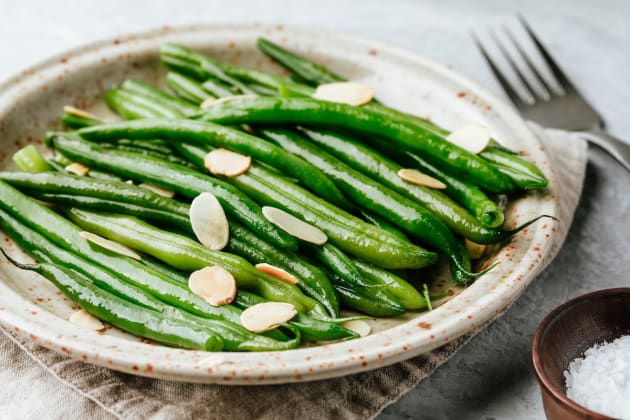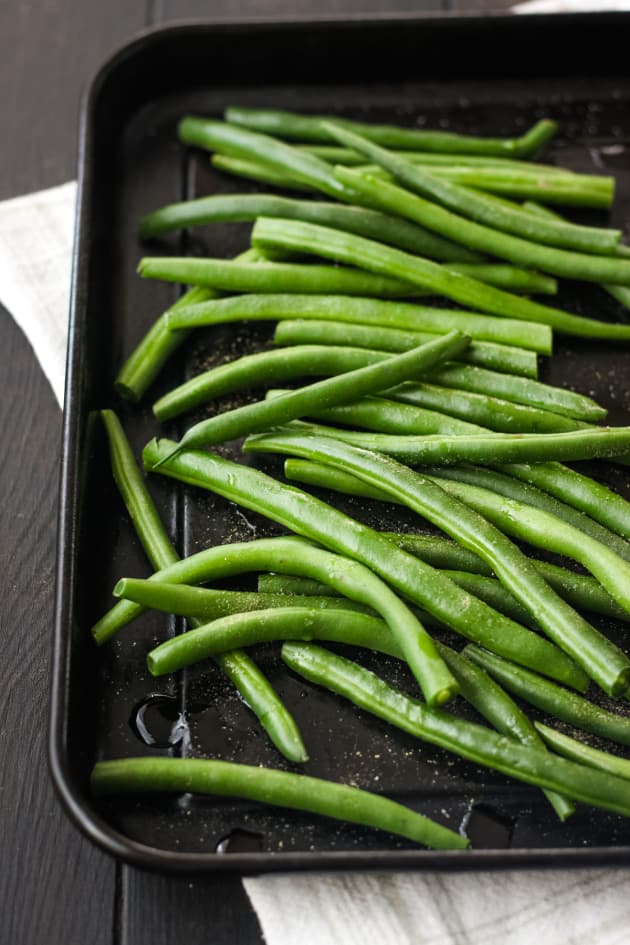How To Tell If Green Beans Are Bad
Nicole AustinWhether you're having fresh green beans or making green bean casserole, you need to know when your beans are bad.
Green beans, also known by different names such as string beans or snap beans, are a popular vegetable to serve as a side or part of a larger main course.
These tasty long beans are delicious both fresh and cooked in a variety of ways, and possess multiple health benefits that, along with a healthy regular diet and exercise, will improve your wellness.
Green beans help fight inflammation and are a good source of folate and potassium, which helps to regulate blood pressure.
They also contain protein and fiber, which help lower cholesterol.
Fiber keeps the digestive system regular and reduces constipation, as well as reducing the risk of colon cancer.
Green beans additionally are rich in beta-carotene and vitamin C, and their affordability and abundance makes them a popular, nutrient-rich choice.
The healthiest way to cook green beans would be a method that preserves their nutritional value.
Boiling will greatly reduce the nutrients in green beans, and remove some of the fresh flavor.
Cooking them in heart-healthy oils, such as olive oil, is recommended.
As always, fresh or flash frozen vegetables are healthier than canned, though any variety will be beneficial to add to your diet.
How to Freeze Fresh Green Beans
Freezing fresh green beans can help you make the most of a bountiful harvest, a great sale at the market, or a gift from someone with a garden.
Freezing raw green beans keeps them healthy and fresh longer, with little hassle.
It is the preferred method for preserving green beans for future use.
Here is a step-by-step breakdown on how to make sure you adequately freeze your fresh green beans:
- Wash your green beans in a stream of cool tap water. You can place them in a colander and move them around to clean them more thoroughly and reduce the chance of dropping the produce. Remove visible dirt with your fingers as you rinse.
- Trim the ends off the green beans by aligning the stems and slicing the tips off with a sharp knife. Prepare a small amount at a time. Cut both ends of the beans and remove any fibers that can be peeled off.
- Blanch your green beans. This will help preserve freshness longer before freezer or fridge storage. Boil one gallon of water per pound of green beans, and additionally prepare a large bowl of ice water. Add fresh green beans to boiling water. Small green beans will take about two minutes, whereas larger beans will require three to four. Once boiled, drain green beans and plunge into the ice bath until completely cool, then drain and dry.
- Pack blanched green beans into a freezer-safe container or bag. If you’re using freezer bags, lay the bag flat to shape it for compact storage and press as much air out as possible.
- Label your containers or bags with the preparation date and place in a freezer. Leave space between bags during the first freeze to allow air to circulate evenly. Once frozen, you can stack the bags or containers.
How Long Do Green Beans Last?
Green beans should remain fresh in proper refrigerator storage conditions if you have not frozen them.
Unwashed, unblanched green beans will keep in the refrigerator for up to seven days.
As a general rule for food safety, prepared green beans are best used within three days if kept in a refrigerator.
This is true for different types of green beans.
Frozen green beans can last several months in the proper conditions. We recommend using them in under a year.
It is important to note that there is a marked difference between nutritional values at 3 and 6 months, so the healthiest time to eat them is prior to 6 months.
Canned green beans that are stored in a cool, dry place (at room temperature) with adequate packaging are good for 2 to 5 years or more.
Still, check the expiration date. Bulging or badly damaged cans, however, should be thrown away.
That's one of the most obvious signs your unopened can has gone bad — never ignore this very good indicator of rotten beans, even if it means creating food waste.
Once the seal has been broken on canned green beans, they should be consumed within 4-5 days, unless they show signs of having gone bad.
How to Select Green Beans
When sorting through green beans, select ones with a smooth texture and a vibrant green color, free from spots or bruises.
Fresh green beans should have a firm texture and “snap” when broken.
How to Tell If Green Beans Are Bad
Many people wonder how they would know if their green beans have gone bad.
Here are a few things you should know. First, we will always advocate for better safe than sorry.
So even if your green beans pass our test, if you’re not comfortable eating them, it’s best to avoid foodborne illnesses or stomach aches and toss them.
While wasting food is never ideal, consuming foods that are compromised can cause serious health risks.
With that in mind, here are some mostly visual cues that your fresh produce may be too old to enjoy:
- Brown spots. While some markings on fresh vegetables are expected, brown spots or “rust” lines are an indicator that the bean is becoming old. Black spots are also a bad sign. If a small amount of beans exhibit slight browning, you can toss them and still use the additional green beans that they were stored with. If there’s only a small mark or portion of the bean that is browned, you can decide whether or not it’s worth it to you to toss the whole bean or to salvage it.
- Mold. Any mold in a grouping of green beans unfortunately means you need to toss the whole bunch. Mold becomes visible only during a certain stage of growth, but unseen spores can be present on all of the surrounding beans. After throwing away the beans, be sure to wash the container and the fridge with hot, soapy water.
- Slime. Slimy texture on your beans is a sign that they are aging. To indicate whether or not to use these beans, we resort to the smell test. If they smell fine, the next step is to check for mold. If there’s an off smell, chuck them. If you do not see mold, rinse them off under cold water and check the texture of the bean. If the texture is now restored, the bean passes our test. However, this falls into the “use your best judgment” category.
- Wrinkles. Wrinkly green beans indicate dryness. The texture may not be favorable but the bean should be edible if all other signs of freshness are met.
Looking for a recipe for green beans? Try our favorite recipes for green bean casserole! You can even microwave green bean casserole. We also recommend this green bean and onion tart recipe.
Nicole is a self-published author of fiction novels, and a lover of food and spending time in the kitchen with her six children. She lives in coastal Maine where she loves exploring new recipes especially those that can save time, money and wow a crowd.
Tags: Green Beans, Vegetables, Beans












